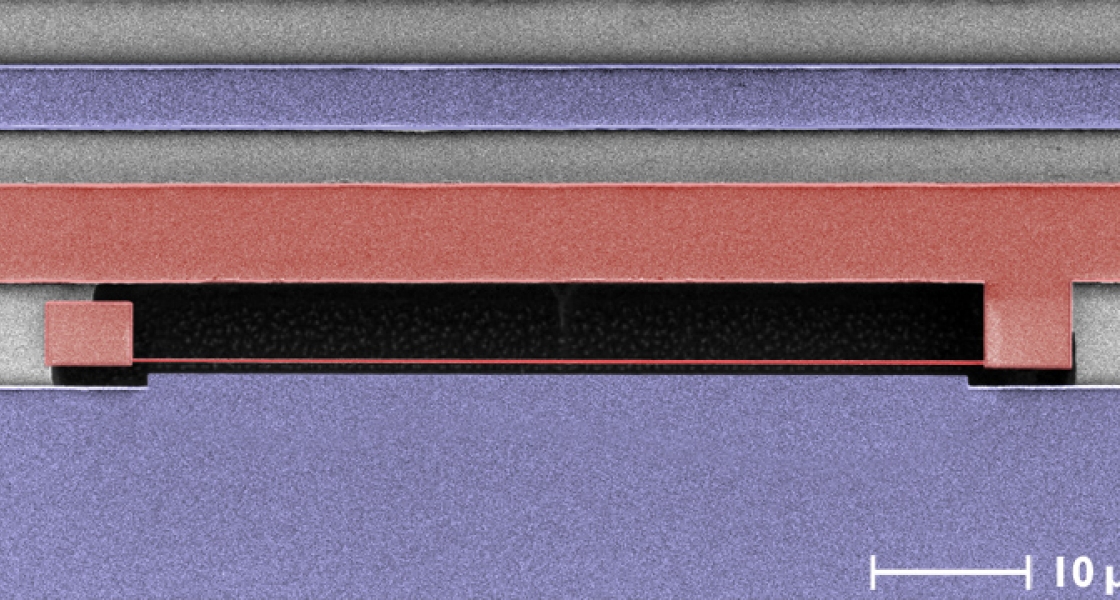Nanoartisans Cindy Regal, John Teufel, and Konrad Lehnert have come up with a clever new way to observe ordinary (very small) things behaving quantum mechanically. They’ve tucked a nanomechanical beam (which is actually a really thin aluminum wire) inside a tiny resonant microwave cavity made of lightweight superconducting aluminum. This design ensures that very small forces will cause large detectable motion. The microwave cavity is analogous to the much larger optical cavities in use throughout JILA.
Former postdoc Regal solved the tricky problem of combining the beam and cavity with painstaking hours spent figuring out how to assemble the components onto a silicon chip. To release the beam, she actually had to etch out the silicon underneath it. Fellow Lehnert compared this step to “Michelangelo removing the marble to reveal a statue,” adding that “once we figured out how to make it, it wasn’t that hard.” The (thin pink) nanomechanical beam, which is embedded inside a microwave cavity, is shown here in a colorized scanning electron micrograph.
Lehnert says the new device will likely be the best possible nanoforce detector once it’s perfected. It’s already the second best detector in the world. It has excellent sensitivity (3 aN/vHz) and can detect tiny heat-induced motions at milliKelvin temperatures. Its displacement imprecision is 30 times the standard quantum limit. Plus, the device is already well within striking distance of being able to detect purely quantum fluctuations. Postdoc Teufel and Lehnert just have to figure out how to get their device cold enough to completely suppress thermal motion, ensuring that the aluminum atoms in their beam are in the quantum mechanical ground state.
Teufel is working on seeing whether he can get the system 100–1000 times colder by using a technique analogous to laser cooling. He starts with a microwave generator (a lot like the one found in everyone's cell phone). The generator produces coherent microwaves at a precise frequency and is very stable. Teufel believes he can arrange the detection system so that the nanomechanical beam slightly increases the frequency of the microwaves inside the cavity. As it does this, the beam cools. What’s clever is that only the beam motion is cooling, hopefully to the point where the researchers can see the purely quantum mechanical effects of its motion. Stay tuned. - Julie Phillips




